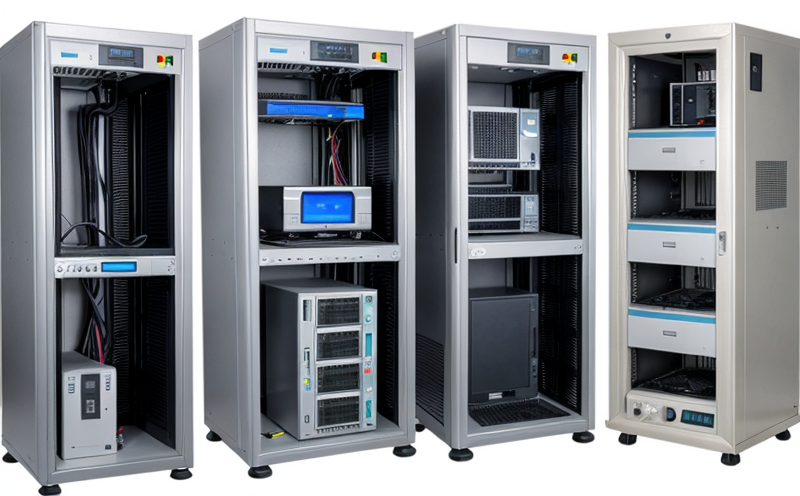IEC 61000 4 3 Radiated RF Immunity Testing for ICT Devices
The International Electrotechnical Commission (IEC) 61000-4-3 standard outlines the requirements for radiated electromagnetic compatibility testing, specifically addressing radio frequency (RF) immunity. This test is critical for ensuring that Information and Communication Technology (ICT) devices can function reliably in environments where they might be exposed to RF interference. The test evaluates how well a device can operate under conditions of unintentional exposure to RF fields.
The standard applies universally across the ICT sector, encompassing a wide range of products such as smartphones, routers, servers, and other communication devices. By adhering to this testing protocol, manufacturers ensure that their products meet international quality standards, thereby enhancing product robustness and reducing potential issues in real-world usage scenarios.
During IEC 61000-4-3 testing, the device under test (DUT) is subjected to controlled RF fields. The frequency range typically spans from 80 MHz up to 2 GHz, depending on the specific requirements of the product being tested. This ensures that the device undergoes rigorous evaluation in a spectrum relevant to most modern communication systems.
Preparation for this test involves several steps: first, the DUT must be mounted onto an appropriate platform designed to simulate real-world conditions. The RF field is generated using specialized equipment capable of producing precise and repeatable electromagnetic interference (EMI) levels. The test chamber used in these evaluations is typically a shielded room with controlled environmental parameters.
The testing process itself involves subjecting the DUT to various levels of RF power, which are gradually increased until the specified immunity criteria are met or exceeded. Throughout this process, detailed measurements are taken to ensure that the device remains operational and performs within acceptable limits. Post-test analysis includes thorough examination of any anomalies observed during the test run.
The results from IEC 61000-4-3 testing provide invaluable insights into a product's ability to withstand environmental factors such as nearby RF sources, which are common in industrial, commercial, and residential settings. This makes it an essential step in ensuring that ICT devices meet international quality standards.
Compliance with this standard not only enhances the reliability of ICT products but also fosters trust among consumers regarding product performance under challenging conditions. By adhering to these stringent testing protocols, manufacturers can ensure their devices are robust enough to operate reliably across diverse environments, thereby reducing the likelihood of malfunction or failure due to unintended electromagnetic interference.
Moreover, such rigorous testing contributes significantly to enhancing overall market competitiveness by ensuring that products meet or exceed global quality benchmarks. This is particularly important in sectors where performance and reliability are paramount, such as telecommunications and electronics manufacturing.
Why It Matters
Ensuring compliance with IEC 61000-4-3 standards is crucial for several reasons. Firstly, it guarantees that ICT devices can function effectively in environments where they might encounter RF interference, thus enhancing their overall performance and reliability.
The standard also helps manufacturers avoid costly rework or product recalls by identifying potential issues early in the development process. This proactive approach ensures that products meet stringent quality standards before being released to market, thereby reducing risks associated with non-compliance.
Additionally, adherence to these testing protocols can lead to improved energy efficiency and reduced electromagnetic pollution. By ensuring that devices do not inadvertently generate excessive RF emissions or are susceptible to interference, manufacturers contribute positively to environmental conservation efforts.
In the context of global trade, compliance with international standards like IEC 61000-4-3 is often a prerequisite for market access in many countries. This ensures that products meet local regulations and consumer expectations, facilitating smoother international business operations.
Furthermore, meeting these standards can enhance brand reputation by demonstrating a commitment to quality and reliability. Positive customer reviews and increased trust among end-users can significantly impact market success and long-term business growth.
Why Choose This Test
Selecting IEC 61000-4-3 testing for ICT devices offers numerous advantages that cater to the diverse needs of manufacturers, quality managers, compliance officers, and R&D engineers. One key benefit is its comprehensive evaluation of RF immunity across a wide frequency range, ensuring robust performance under varying environmental conditions.
The test's rigorous nature provides manufacturers with detailed insights into potential weaknesses in their products, allowing for targeted improvements before product launch. This early identification of issues can significantly reduce post-market recalls and warranty claims, thereby minimizing financial losses and enhancing customer satisfaction.
Moreover, IEC 61000-4-3 testing supports regulatory compliance by ensuring that products meet stringent international standards. This is particularly important in competitive global markets where adherence to these benchmarks is often a prerequisite for market access.
The test's ability to simulate real-world conditions makes it invaluable for R&D engineers seeking to innovate and improve product design. By understanding how their devices perform under specific RF interference scenarios, they can refine features and functionalities that enhance user experience.
For quality managers and compliance officers, IEC 61000-4-3 testing offers a standardized framework to ensure consistent product quality across different production batches. This consistency is crucial in maintaining high standards of reliability and performance expected by consumers.
Customer Impact and Satisfaction
The implementation of IEC 61000-4-3 testing has a significant positive impact on customers, enhancing satisfaction levels across multiple dimensions. Firstly, the enhanced robustness of ICT devices ensures they can operate reliably in challenging environments, reducing the likelihood of failures or malfunctions.
Customers benefit from increased product longevity and reduced maintenance costs due to improved durability and reliability. This translates into greater value for money, as customers receive products that meet their expectations consistently over time.
The consistent performance across different batches ensures that all users experience uniform quality standards. This consistency builds trust and confidence among consumers, fostering loyalty and repeat purchases.
Furthermore, meeting international standards like IEC 61000-4-3 can lead to improved energy efficiency, which is particularly beneficial for environmentally conscious customers. By contributing to reduced electromagnetic pollution, these products align with broader sustainability goals.





